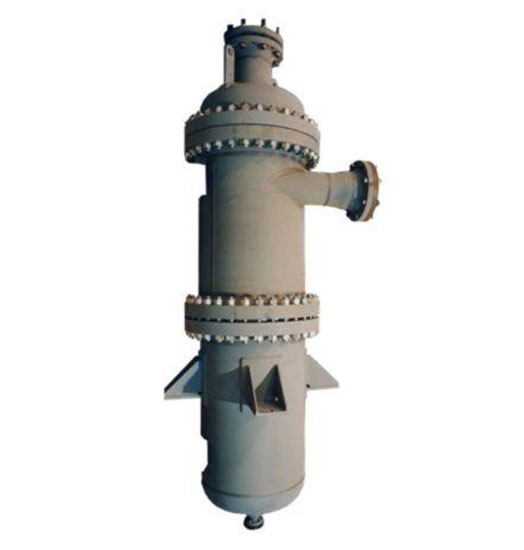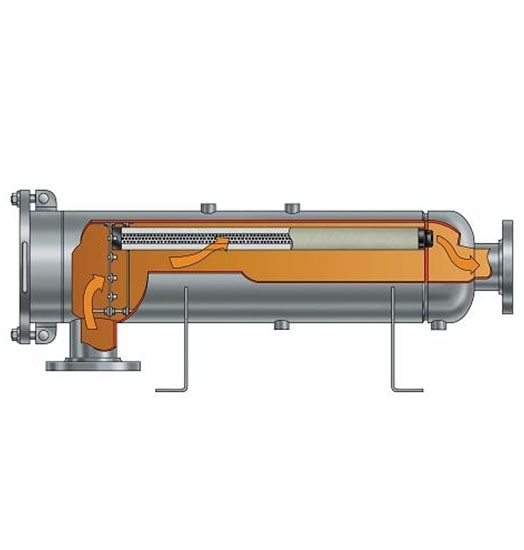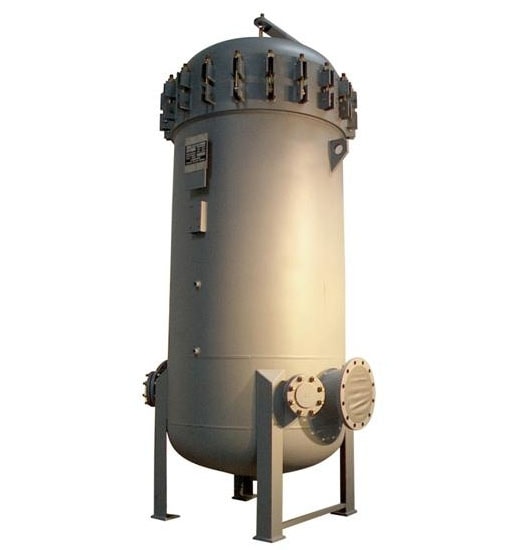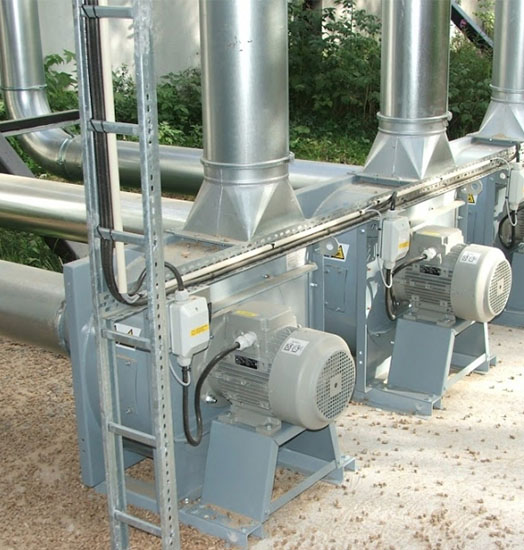HYDROCYCLONES
Large passage liquid – solids cyclones offer a cost-effective solution for the removal of large amounts of course solids from high volume liquid streams found in the process industry. Due to the large passages inside the cyclone (the solids drain connection is the smallest of the cyclone process connections) plugging is virtually impossible. Unlike basket strainers and filters, cyclones are unaffected by the sudden releases of large amounts of solids. The differential pressure depends on the actual flow rate going through the cyclone. Therefore the differential pressure will remain unchanged if the cyclone is confronted with a ‘slug’ of solids. The solids will be removed and the cyclone will continue to operate without maintenance requirements.
Due to the reduction of the inlet size, the liquid is accelerated before entering the vessel. The accelerated liquid is forced to follow the vessel wall and consequently, the liquid will start to rotate at high speed in the vessel. Due to the high angle speed created by the shape of the vessel, the heavier solids particles are forced to the vessel wall. There the solids will start a spiral-shaped traveling path towards the solids drain of the cyclone. To assist the removal of the solids and to prevent solids to re-enter the liquid flow the lower part of the cylindrical vessel is provided with a cone. The cone will guide the solids towards the solids drain and due to the reducing diameter, the angle-speed remains high although the actual speed reduces. To overcome short interruptions of the drain flow the bottom part of the cyclone vessel allows for the storage of limited amounts of solids.
Usually, the hydrocyclones are combined in one unit with filter settlers. A typical application of hydrocyclones system is the removal of coke in an ethylene process unit.










